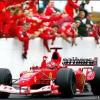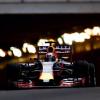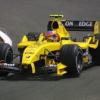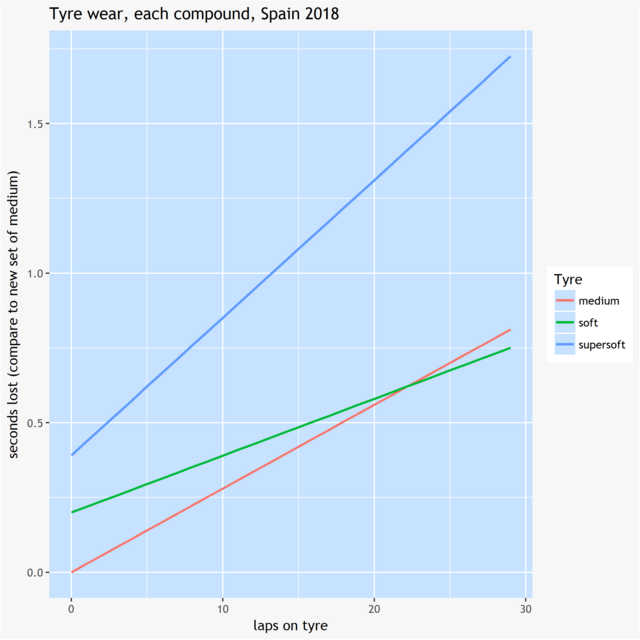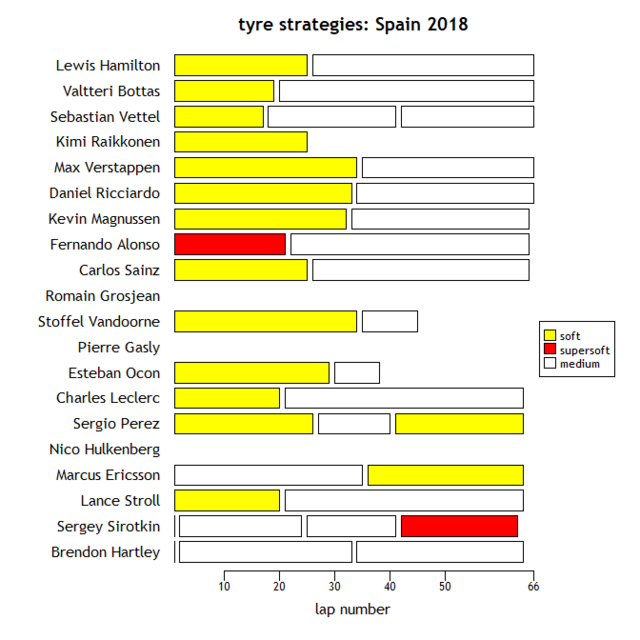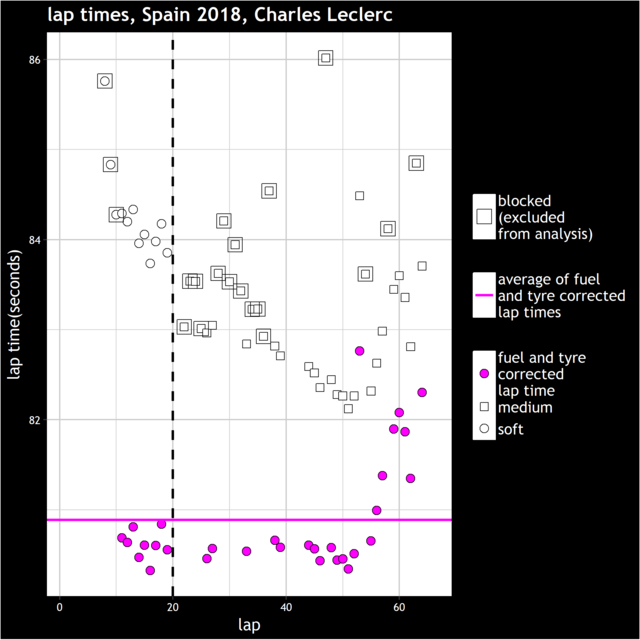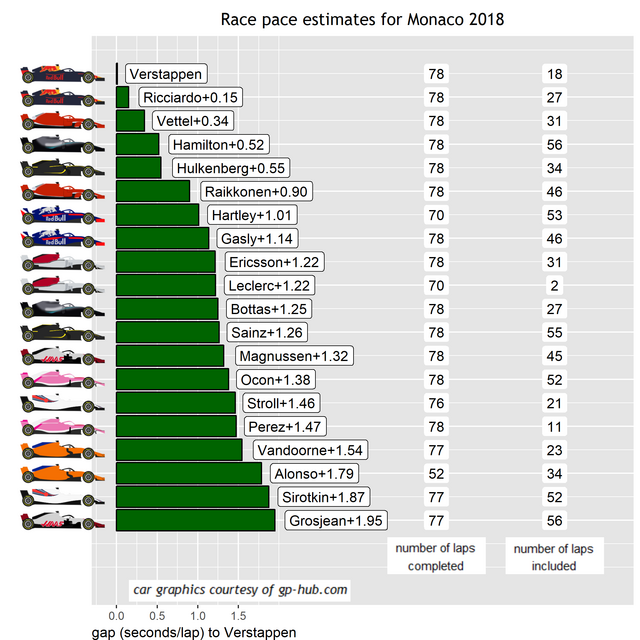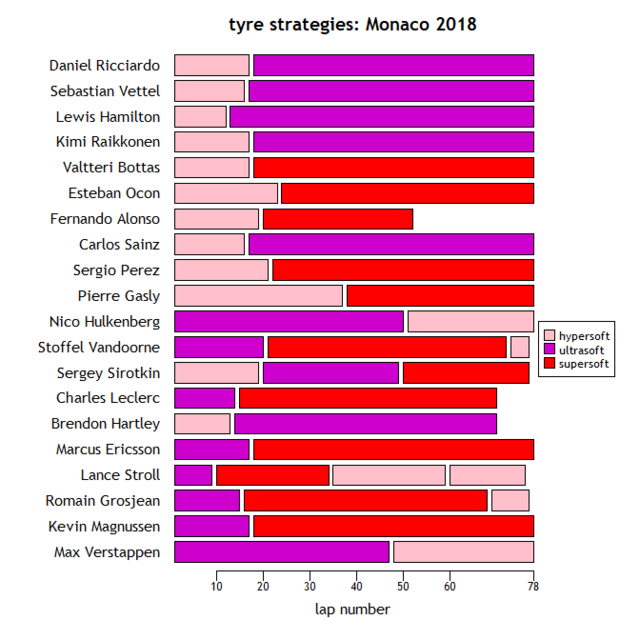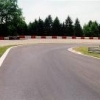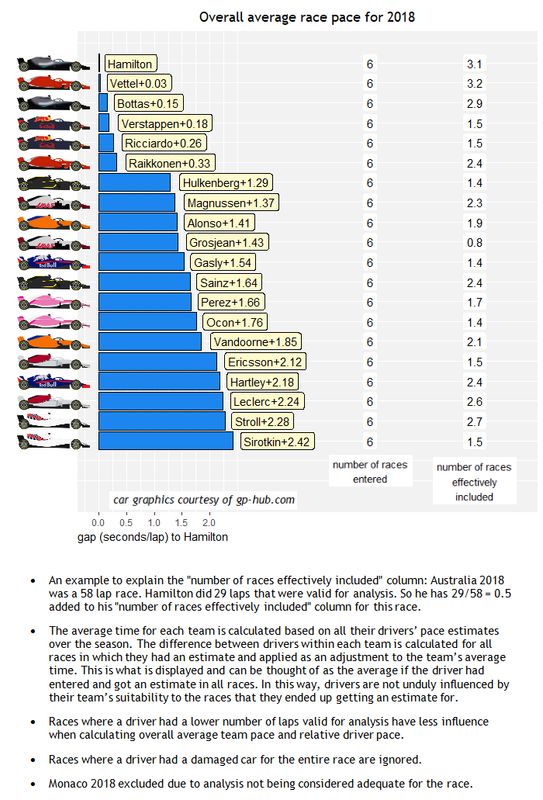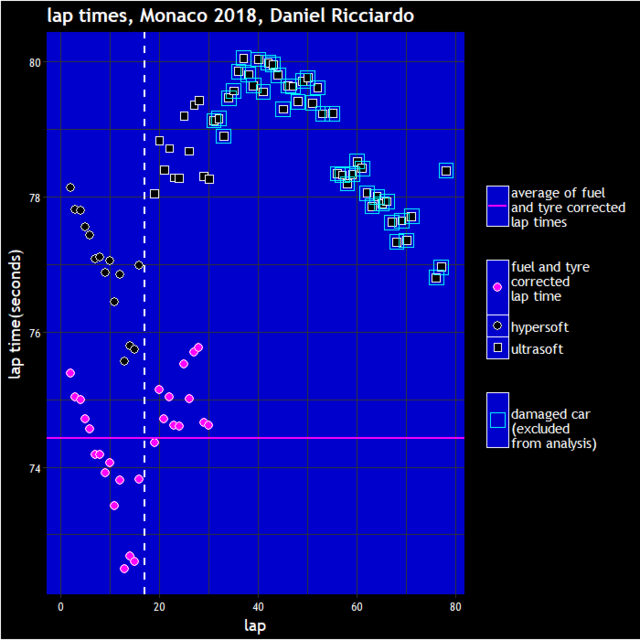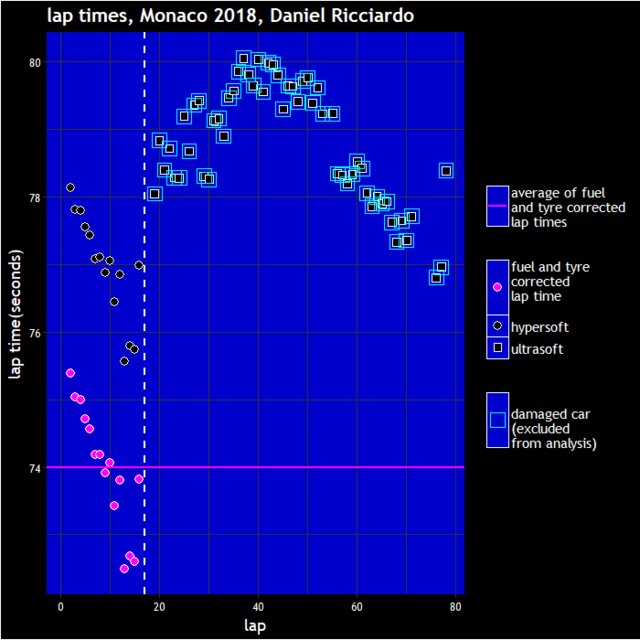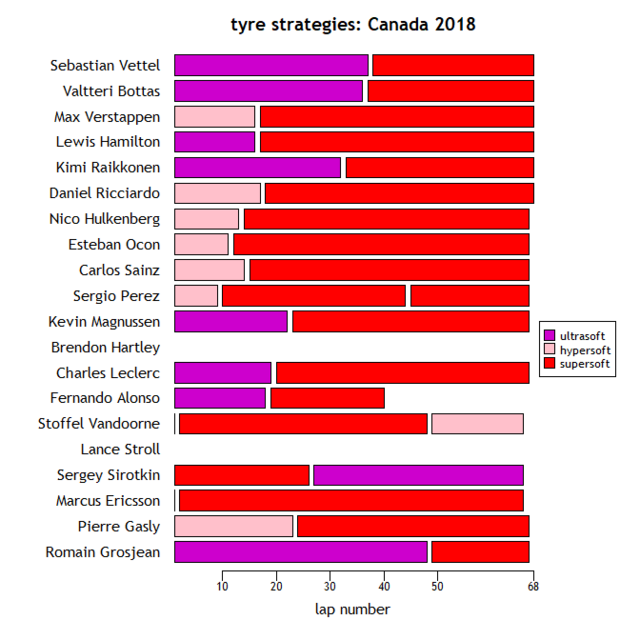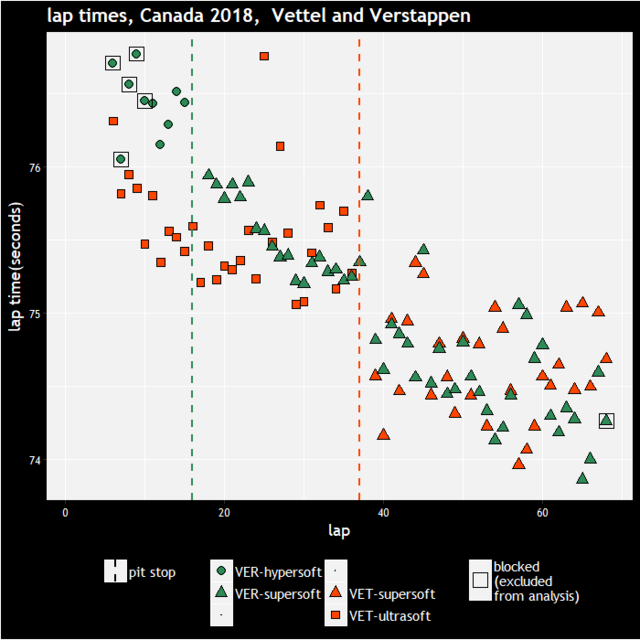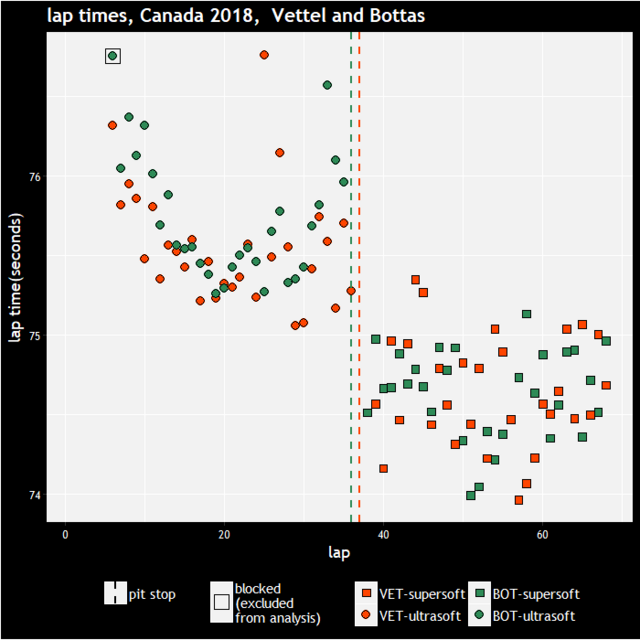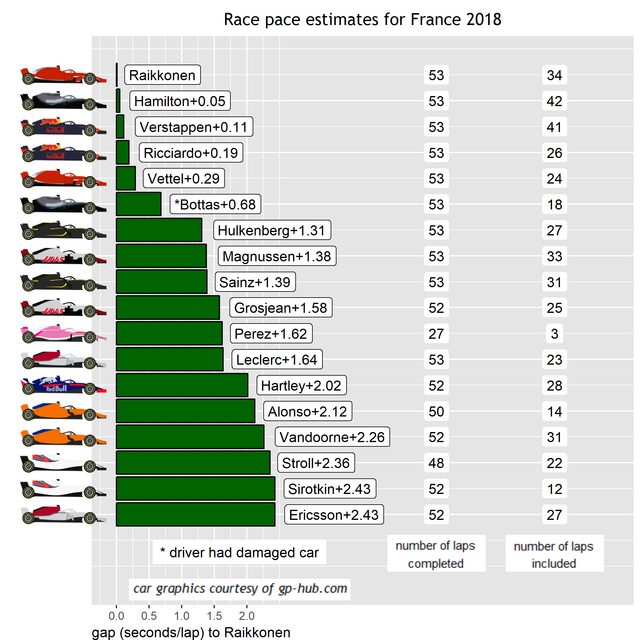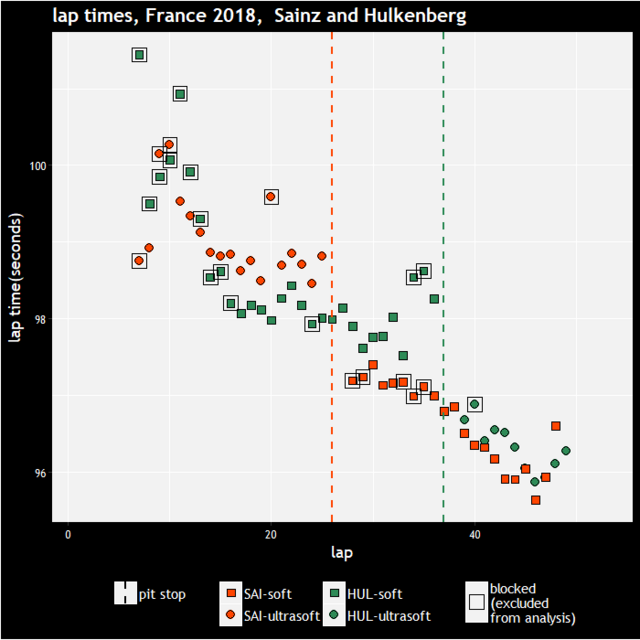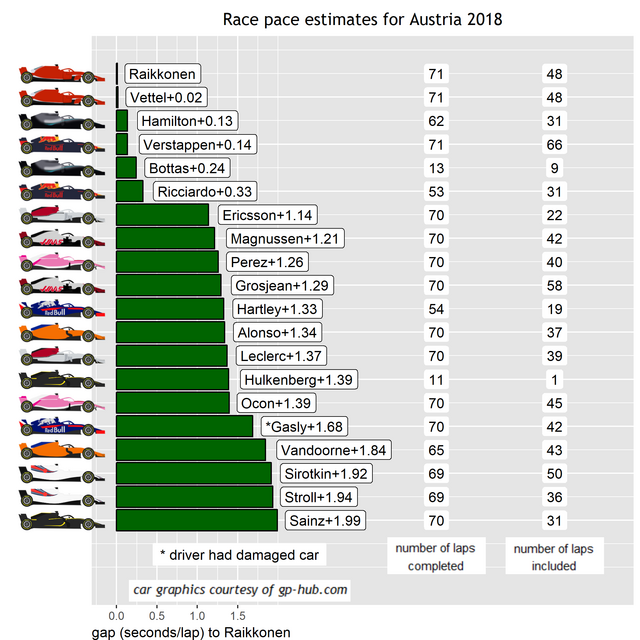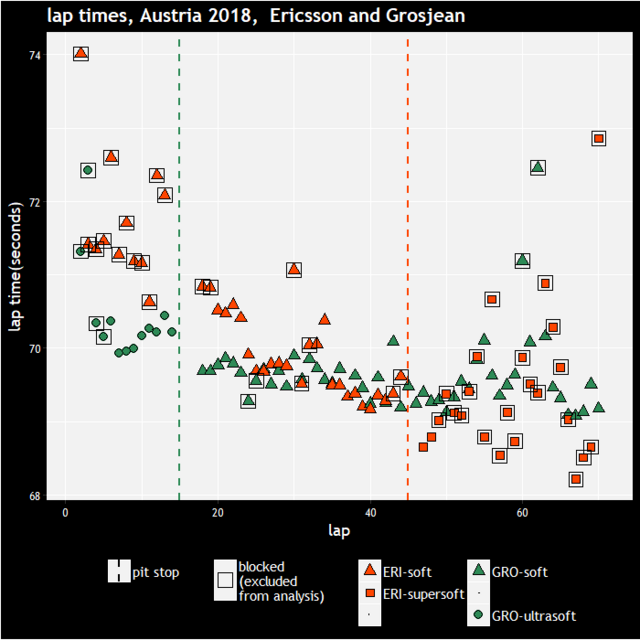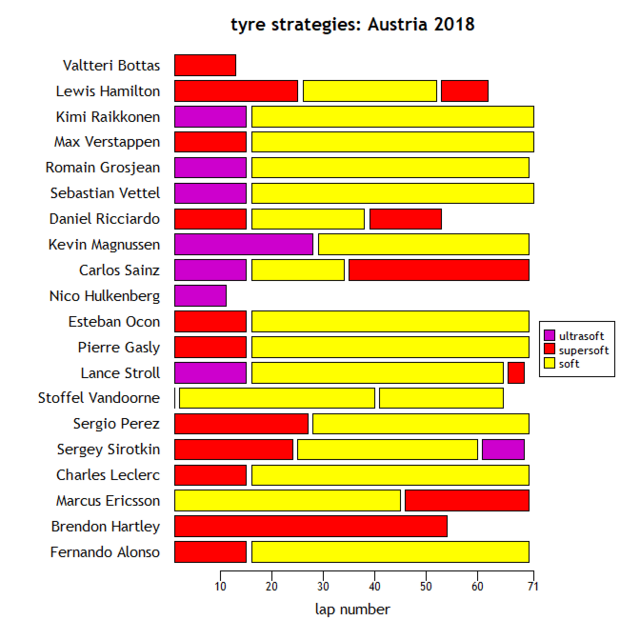Hi, welcome to the 2018 edition of the race pace thread. There was a thread dedicated to race pace analysis for 2017, you can find it here:
http://forums.autosp...tistical-model/
The method I use is unchanged since last season, however I'll be explaining it again using the 2018 Australian Grand Prix. Although the method is the same as for last season, I've described the way it works a little differently this season so that it's hopefully a little clearer.
So to summarise, we want to take the lap times for each driver in each race, and from them calculate what their outright pace was. Each lap time is affected by the amount of fuel on board, the tyres used and the age of the tyre, so we need to estimate the effects of those. In addition, lap times can frequently be affected by being stuck behind other cars, or being involved in overtaking battles, so we filter out these laps.
We'll do a worked example with one driver, I've chosen the the winner, Vettel, from the Australian Grand Prix. Here are all of his lap times

This plot is not great because the scale is dominated by the very slow laps around the pit stops and safety car period, so we'll remove these unrepresentative laps. In general we remove laps done behind the safety car, inlaps, outlaps, lap 1, safety car restart laps and obvious outliers. Next, we'll plot the remaining lap times, but we'll highlight when Vettel's lap times were affected by traffic, which were at the start of the race before Raikkonen had pulled out a bit of a gap. In general I remove any laps where they overtook someone, got overtaken, got lapped or were blocked. Having done various investigations, I use a definition of being within 1.5 seconds of the car ahead as being blocked.

So the 'clear lap's are the useful ones. However, there are factors that affect these lap times, most importantly the fuel load, which tyre was being used and how long it had been used for. So we'll start off by displaying the effect of the fuel load. Below is the plot of Vettel's 'clear lap' times, but with a line of best fit going through them - this has been obtained by finding the line that passes most closely through all of the lap times for the clear laps. It doesn't pass very closely between them, but we'll deal with that shortly.

Using that line, we can display the lap times for Vettel correcting for the fuel load. These can be thought of as the lap times he would have set if the car had had only 1 lap of fuel in it, and are displayed with the blue points here:

So the biggest trend i.e. lap times dropping throughout the race, has been accounted for. However we notice that the lap times get slower as he gets further into each stint. This is of course the effect of tyre wear. The tyre wear is generally more difficult to estimate accurately than the fuel load because there is quite a lot of variation in how drivers treat their tyres in the race, there are phases when they push and phases when they drop back etc.
There is also the question of whether the tyre wear is different for different cars. There might well be some variation but in this model we group all cars together when estimating the effect of tyres (and the fuel load for that matter). By doing this we get estimates that are certainly close to being accurate for every car and even in the cases where a car does use their tyres a little differently to others, it's rare that it has much of an impact on their final pace estimate because the effects of it tend to balance out over the course of the race.
We'll discuss the tyre wear in more detail later on, but for now we'll display what the effect of the fuel and tyre was for every lap. However, when we say 'tyre effect', it's a bit ambiguous, the effect compared to what? We need to choose a 'reference state' and display how much time was lost compared to it. When we referred to the fuel effect, the reference state was 1 lap of fuel, i.e. we calculated what lap time would have been set with 1 lap of fuel. For tyre, the chosen reference state is a new set of the fastest tyre (when new). As it turns out, the soft tyre is calculated to be the fastest tyre when new.
So here is the display of how each of Vettel's lap times were affected by fuel, tyre choice and tyre wear on every lap:

So we see that we take off less and less throughout the race, as his fuel load goes down. However at the end of the race we still take off almost a second: although he's only got 1 lap of fuel left, his softs have worn down so that's costing him about a second compared to a fresh set.
As before, we then take these numbers away from his actual times to get fuel and tyre corrected times:

The blue line represents the average of all of Vettel's lap times, accounting for his fuel load and tyres. If Vettel had driven exactly the same way on every lap, and model was completely correct in estimating the way the Ferrari used its tyres and fuel loads, then all the blue points would lie exactly on the blue line. Obviously that isn't the case, so we see a certain amount of scatter. In particular there does seem to be a bit of a trend that he slowed down a bit more towards the end of his first stint that what we've accounted for, however, the fast laps at the start of stint 1 are balanced out by the slower ones at the end of it.
So we repeat this process for all drivers and we get that blue line for all of them, and these represent their race pace estimates. Here are how all the drivers are ranked:

So, Vettel, Raikkonen and Hamilton are ranked more or less equally here. If anything I would guess that Hamilton probably had a bit more pace to spare, however the model can only go on what lap times a driver sets, not the lap time they could have set.
Now, some races are a handled better by the model than others and I was hoping that Australia would be nice one to start the season with. However it was actually a fairly horrible one to have to work with. There were several cars stuck in traffic almost throughout the entire race, which causes two problems, firstly we have hardly any laps to estimate those drivers (so Grosjean, Bottas and the Red Bulls have very dodgy estimates), secondly it means that we don't have as much data as we'd like to estimate tyre effects. Here are the estimated tyre effects:

So the ultrasofts were estimated to be not as fast as the softs when new, but had lower degradation. This seems a little odd because we normally expect the softer compounds to be quicker initially but degrade more quickly. This is all relative however, in fact this was a very low degradation race in general. Despite the plan for less conservative tyres this year, last year's Australian Grand Prix actually had faster degradation on all compounds.
Meanwhile the supersofts were estimated to be comfortably the best tyre. There might be a lack of data here affecting things. Although several drivers used the supersoft, most of them were stuck in traffic almost the entire time while using it, so that only Leclerc and Stroll (stint 1) and Vandoorne (stint 2) give us decent data on it. But if you compare their times with and without it (relative to other drivers), they were certainly faster on it.
So that leads to the question, why didn't more drivers use the supersoft? The only comment I can find relevant to this is towards the end of James Allen's strategy review column, where it's stated that the tyres were very sensitive to the conditions. It could be that what worked for Leclerc, Stroll and Vandoorne wouldn't necessarily work for other cars, or it could be that picking the correct tyre is not an exact science with all the changing conditions in the race.
Anyway, that's all for this race, obviously comments/queries/criticisms all welcome. Bahrain is far easier circuit to overtake on, so I'm expecting a much easier race to deal with next time ![]()
Edited by moreland, 03 May 2018 - 12:45.







